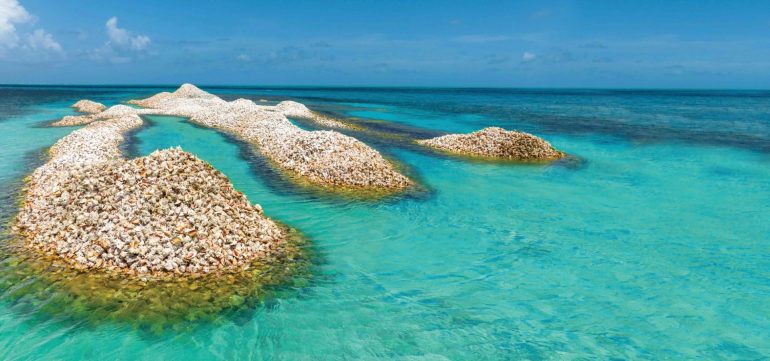The invasion of coral diseases in the underwater world is probably one of the biggest problems reefs face today. It is easy to speculate there is a link between specific human activities, water quality and disease, but the role of human influence on coral disease is extremely unclear. It has been, and continues to be, part of the extensive and varied literature and discussions within the scientific community. However, the widespread occurrence of coral diseases is more than likely a result of the overall decline of the wider marine environment.

Bacteria were first observed within coral tissue in the early 1900s, but it wasn’t until the early 1970s that the first reports surfaced of disease affecting corals in the Caribbean. The outbreak of what is called “white band disease” nearly wiped out all of the elkhorn (Acropora palmata) and staghorn (Acropora cervicornis) during the 70s and 80s throughout the Caribbean. This goes on record as one of the most horrific events for corals in the Caribbean, especially since these particular types of coral were the most abundant throughout the region for thousands of years.

Since the outbreak of white band disease, numerous other diseases have appeared on reefs around the world. Here is a list of diseases known to affect corals here in the BVI and throughout the Caribbean. While it is known what pathogens are causing these diseases, it is still a mystery where they came from or why they began attacking corals.
- • Black Band Disease
- • Caribbean Ciliate Infection
- • Coloured Band Diseases (Aspergillosis & Purple Spots)
- • Dark Spots Disease
- • Red Band Disease
- • White Band Disease
- • White Plague
- • White Pox (Patchy necrosis)
- • Yellow Band Disease
Understanding coral diseases is difficult, especially if you’re not a coral specialist. Even scientists argue over different names for the same diseases, what causes the diseases or even whether what some scientists believe is a disease is in fact caused by predation of other species. In other words, there are diseased-looking corals that may not really be “diseased” (they just look sick) and their “illness” is actually caused by a specific environmental stressor. These stressors include predation by coral-eating fish such as parrotfish and butterfly fish or overgrowth of one species over another. Then there are the tumours that do or do not change the skeletal structures of the coral. Of course you also have “bleaching” due to warmer (or cooler) than average seawater temperatures. But with all these corals looking a bit under the weather, either from a disease or some other factor, one fact upon which scientists agree is that our oceans are in peril. Better protection of the reefs we have left and, like taking care of ourselves, taking better care of our marine resources, is just what the doctor has ordered.

The International Year of the Reef 2008 is a worldwide campaign to raise awareness about the value and importance of coral reefs and threats to their sustainability, and to motivate people to take action to protect them. To that end, over the next year, articles about coral reefs will be a regular feature in this magazine.







